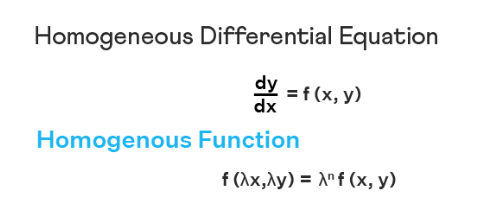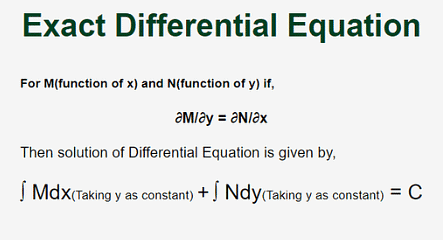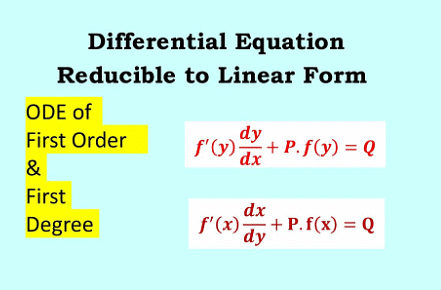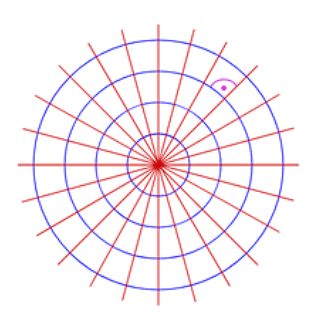Differential Equations | Mathematics (Maths) for JEE Main & Advanced PDF Download
An equation that involves an independent variable, dependent variable and differential coefficients of dependent variable with respect to the independent variable is called a differential equation.
e.g., (i) x2(d2y / dx2) + x3 (dy / dx)3 7x2y2
(ii) (x2 + y2) dx = (x2 – y2) dy.
Order and Degree of a Differential Equation
- The order of a differential equation is the order of the highest derivative occurring in the equation. The order of a differential equation is always a positive integer.
- The degree of a differential equation is the degree (exponent) of the derivative of the highest order in the equation, after the equation is free from negative and fractional powers of the derivatives.
Linear and Non-Linear Differential Equations
A differential equation is said to be linear, if the dependent variable and all of its derivatives occurring in the first power and there are no product of these. A linear equation of nth order can be written in the form
where, P0, P1, P2,…, Pn – 1 and Q must be either constants or functions of x only.
A linear differential equation is always of the first degree but every differential equation of the first degree need not be linear.
e.g., The equations d2y / dx2 + (dy / dx)2 + xy = 0 and
x(d2y / dx2) + y (dy / dx) + y = x3, (dy / dx) d2y / dx2 + y = 0 are not linear.

Solution of Differential Equations
A solution of a differential equation is a relation between the variables, not involving the differential coefficients, such that this relation and the derivative obtained from it satisfy the given differential equation.
e.g., Let d2y / dx2 + y = 0
Integrating above equation twice, we get y = A cos x + B sin x.
General Solution
If the solution of the differential equation contains as many independent arbitrary constants as the order of the differential equation, then it is called the general solution or the complete integral of the differential equation.
e.g., The general solution of d2y / dx2 + y = 0 is y = A cos x + B sin x because it contains two arbitrary constants A and B, which is equal to the order of the equation.
Particular Solution
Solution obtained by giving particular values to the arbitrary constants in the general solution is called a particular solution. e.g., In the
previous example, if A = B = 1, then y = cos x + sin x is a particular solution of the differential equation d2y / dx2 + y = 0.
Solution of a differential equation is also called its primitive.
Formation of Differential Equation
Suppose, we have a given equation with n arbitrary constants f(x, y, c1, c2,…, cn) = 0.
Differentiate the equation successively n times to get n equations.
Eliminating the arbitrary constants from these n + 1 equations leads to the required differential equations.
Solutions of Differential Equations of the First Order and First Degree:
A differential equation of first degree and first order can be solved by following method.
1. Inspection Method
If the differential equation’ can be written as f [f1(x, y) d {f1(x, y)}] + φ [f2(x, y) d {f2(x, y)}] +… = 0] then each term can be integrated separately.
For this, remember the following results:
2. Variable Separable Method
If the equation can be reduced into the form f(x) dx + g(y) dy = 0, we say that the variable have been separated. On integrating this reduced, form, we get ∫ f(x) dx + ∫ g(y) dy = C, = C, where C is any arbitrary constant.

3. Reducible to Variables Separable Method
A differential equation of the form dy / dx = f(ax + by + c) can be reduced to variables separable form by substituting
ax + by + c = z => a + b dy / dx = dz / dx
The given equation becomes:
1 / b (dz / dx – a) f(z) => dz / dx = a + b f(z) => dz / a+ bf(z) = dx
Hence, the variables are separated in terms of z and x.
4. Homogeneous Differential Equation
A function f(x, y) is said to be homogeneous of degree n, if
f(λx, λy) = λn f(x, y)
Suppose a differential equation can be expressed in the form
dy / dx = f(x, y) / g(x, y) = F (y / x)
where, f(x, y) and g(x, y) are homogeneous function of same degree. To solve such types of equations, we put y = vx
=> dy / dx = v + x dv / dx.

The given equation, reduces to
v + x dv / dx = F(v)
=> x dv / dx = F(v) – v
∴ dv / F(v) – v = dx / x
Hence, the variables are separated in terms of v and x.
5. Reducible to Homogeneous Equation
The differential equation of the form
dy / dx = a1x + b1y + c1 / a2x + b2y + c2 ……(i)
put X = X + h and y = Y + k
∴ dY / dX = a1 X + b1 Y + (a1h + b1k + c1) / a2X + b2 Y + (a2h + b2k + c2) ……(ii)
We choose h and k, so as to satisfy a1h + b1k + c1 = 0 and a2h + b2k + c2 = 0.
On solving, we get
h / b1c2 – b2c1 = k / c1a2 – c2a1 = 1 / a1b2 – a2b1
∴ h = b1c2 – b2c1 / a1b2 – a2b1 and k = c1a2 – c2a1 / a1b2 – a2b1
Provided a1b2 – a2b1 ≠ 0 , a1 / a2 ≠ ba / b2
Then, Eq, (ii) reduces to dY / dX = (a1 X + b1 Y) / (a2X + b2 Y), which is a homogeneous form and will be solved easily.
6. Exact Differential Equation
Differential equation M(x,y) dy + N(x,y) dy = 0 is called an exact differential equation.
If a function u (x, y) exist such that, du = Mdx + Ndy.

Necessary and Sufficient Condition for an Equation to be an Exact Differential Equation
Differential equation Mdx + Ndy = 0 where, M and N are the functions •of x and y, will be an exact differential equation, if
∂N / ∂y = ∂N / ∂x
Solution of Exact Differential Equation:
7. Linear Differential Equation
A linear differential equation of the first order can be either of the following forms:

(i) dy / dx + Py = Q, where P and Q are functions of x or constants.
(ii) dx / dy + Rx = S, where Rand S are functions of y or constants.
Consider the differential Eq. (i) i.e., dy / dx + Py = Q
Similarly, for the second differential equation dx / dy + Rx = S, the integrating factor, IF = e ∫R dy and the general solution is
x (IF) = ∫ S (IF) dy + C
8. Differential Equation Reducible to Linear Form
Bernoulli’s Equation: An equation of the form dy / dx + Py = Qyn, where P and Q are functions of x along or constants, is called
Bernoulli’s equation.

Divide both the sides by yn, we get
y-n dy / dx + Py-n + 1 = Q
Put y-n + 1 = z
=> (-n + 1)y-n dy / dx = dz / dx
The equation reduces to
1 / 1 – n dz / dx + Pz = Q => dz / dx + (1 – n) Pz = Q (1 – n)
which is linear in z and can be solved in the usual manner.
9. Clairaut Form for Differential Equation
Differential equation y = Px + f(p), where P= dy / dx … (i)
is called clairaut form of differential equation. In which, get its general solution by replacing P from C.
Now, differential on both sides of Eq, (i) with respect to x and put dy / dx = P.
P = P + x dp / dx + f’ (P) dp / dx = 0
=> [x + f’ (p)] dp / dx = 0
=> dp / dx = 0 => p = C
10. Orthogonal Trajectory
Any curve, which cuts every member of a given family of curves at right angle, is called an orthogonal trajectory of the family.

Procedure for finding the Orthogonal Trajectory
(i) Let f(x,y,c)= 0 be the equation of the given family of curves, where ‘c’ is an arbitrary parameter.
(ii) Differentiate f = 0, with respect to ‘x’ and eliminate 0, i.e., from a differential equation.
(iii) Substitute (- dx / dy) for (dy / dx) in the above differential equation.
This will give the differential equation of the orthogonal trajectories.
(iv) By solving this differential equation, we get the required orthogonal trajectories.
|
172 videos|503 docs|154 tests
|
FAQs on Differential Equations - Mathematics (Maths) for JEE Main & Advanced
| 1. What is the difference between linear and non-linear differential equations? |  |
| 2. How can one determine if a given differential equation is linear or non-linear? |  |
| 3. What are some common methods used to solve linear differential equations? |  |
| 4. Can non-linear differential equations always be solved analytically? |  |
| 5. How are differential equations used in real-world applications? |  |























